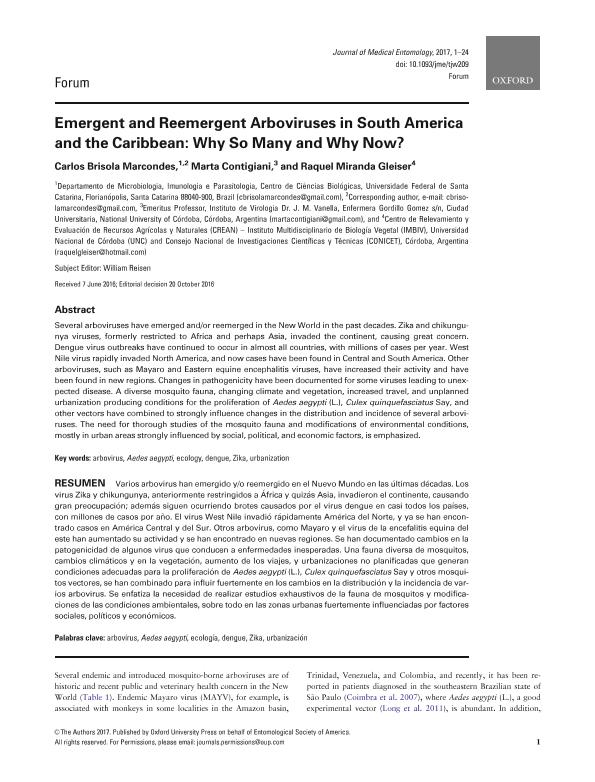Artículo
Emergent and reemergent arboviruses in South America and the Caribbean: Why so many and why now?
Fecha de publicación:
02/05/2017
Editorial:
Entomological Society of America
Revista:
Journal of Medical Entomology
ISSN:
0022-2585
e-ISSN:
1938-2928
Idioma:
Inglés
Tipo de recurso:
Artículo publicado
Clasificación temática:
Resumen
Several arboviruses have emerged and/or reemerged in the New World in the past decades. Zika and chikungunya viruses, formerly restricted to Africa and perhaps Asia, invaded the continent, causing great concern. Dengue virus outbreaks have continued to occur in almost all countries, with millions of cases per year. West Nile virus rapidly invaded North America, and now cases have been found in Central and South America. Other arboviruses, such as Mayaro and Eastern equine encephalitis viruses, have increased their activity and have been found in new regions. Changes in pathogenicity have been documented for some viruses leading to unexpected disease. A diverse mosquito fauna, changing climate and vegetation, increased travel, and unplanned urbanization producing conditions for the proliferation of Aedes aegypti (L), Culex quinquefasciatus Say, and other vectors have combined to strongly influence changes in the distribution and incidence of several arboviruses. The need for thorough studies of the mosquito fauna and modifications of environmental conditions, mostly in urban areas strongly influenced by social, political, and economic factors, is emphasized.
Palabras clave:
AEDES AEGYPTI
,
ARBOVIRUS
,
DENGUE
,
ECOLOGY
,
URBANIZATION
,
ZIKA
Archivos asociados
Licencia
Identificadores
Colecciones
Articulos(CCT - CORDOBA)
Articulos de CTRO.CIENTIFICO TECNOL.CONICET - CORDOBA
Articulos de CTRO.CIENTIFICO TECNOL.CONICET - CORDOBA
Citación
Brisola Marcondes, Carlos ; Contigiani de Minio, Marta Silvia; Gleiser, Raquel M.; Emergent and reemergent arboviruses in South America and the Caribbean: Why so many and why now?; Entomological Society of America; Journal of Medical Entomology; 54; 3; 2-5-2017; 509-532
Compartir
Altmétricas




